Methane Rises From Volcano Cracks Creating Blue Flames
Update 12:30 p.m. 5.23.18
Hawaiian Volcano Observatory reports eruption activity continues in the Lower East Rift Zone. The middle portion of the fissure system continues to be the most active.
There are currently three lava flows entering the ocean between Pohoiki Bay and MacKenzie State Park (Highway 137 mile markers 12 to 14). Lava eruption continues in the area of Leilani Estates and Lanipuna Gardens from Fissure 22, which is feeding the two other ocean entries.
Fissure 7 reactivated this morning and is actively fountaining lava. The flow is moving towards the east into Leilani Estates. So far, it has covered Kaupili and Mohala Streets, between Leilani Avenue and the fissure line. The flow continues to be active.
Due to frequent ash emissions at the Kilauea summit and increased sulfur dioxide emissions, residents should take action to limit exposure.
Due to the volcanic activity, the following policies are in effect:
Be aware of the laze hazard and stay away from any ocean plume.
Residents down rift of the lava flows should be prepared to voluntarily evacuate at a moment’s notice.
For more information about the ocean entries and the most up-to-date maps, visit the USGS Hawaiian Volcanoes Observatory’s website: https://volcanoes.usgs.gov/volcanoes/kilauea/multimedia_maps.html
Residents can learn more about current sulfur dioxide emission levels and forecasts by visiting the University of Hawaii’s Vog Measurement and Prediction Project website: http://mkwc.ifa.hawaii.edu/vmap/hysplit/
Previous Post:
New imagery from the Kīlauea Volcano shows blue flames rising from the ground overnight. Officials with the US Geological Survey, Hawaiian Volcano Observatory say the flames are from methane gas that is produced as a byproduct of burning vegetation that gets buried by lava.
The blue flames were observed in cracks on Kahukai Street in the Leilani Estates Subdivision.
Authorities say methane gas can seep into subsurface voids and explode when heated, or as shown in this video, emerge from cracks in the ground several feet away from the lava.
A helicopter overflight of the Lower East Rift Zone ocean entry and fissure complex shows ongoing eruption activity with a new lava flow expected to enter the ocean east of MacKenzie State park tonight.
The middle portion of the fissure system has been described as the most active. The Hawaii County Civil Defense Agency also reports flows and ground cracking continue in both Leilani Estates and Lanipuna Gardens.
At the summit of Kīlauea, explosions are occurring about two times a day, producing ash that rises to a height of between 8,000 to 10,000 feet above sea level. Small ash emissions occur more frequently. The larger explosions produce ash that is blown downwind, and trace amounts have fallen in nearby communities.
Authorities say that the situation at Puna Geothermal Venture remained stable at last report with no further encroachment reported overnight.
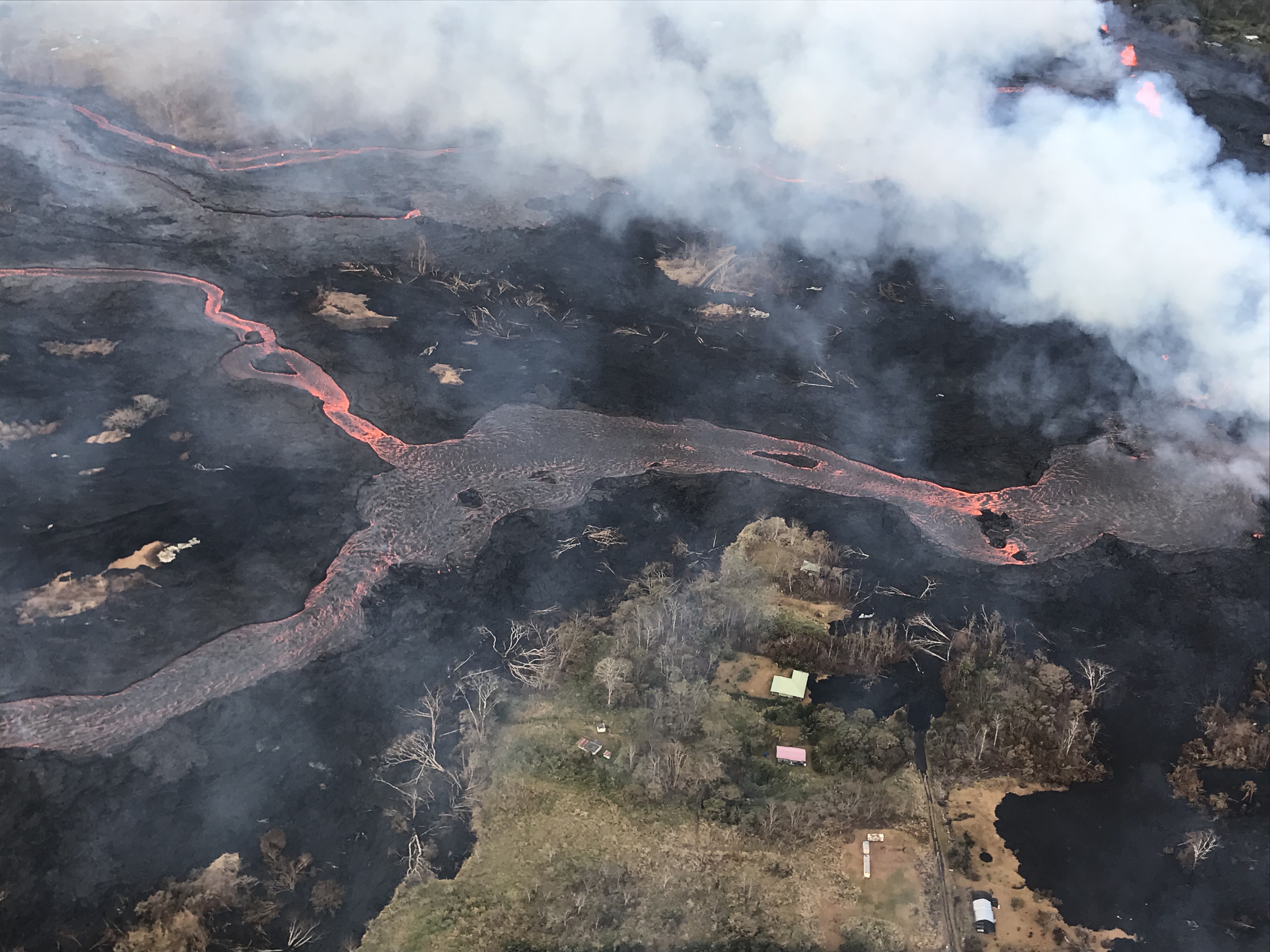
Helicopter overflight of Kīlauea Volcano’s lower East Rift Zone shows the lava channel emerging from Fissure 22 (not visible, but to the center, far right of the image). The lava is flowing downhill, from right to left in the photo. PC: US Geological Survey, May 23, 2018
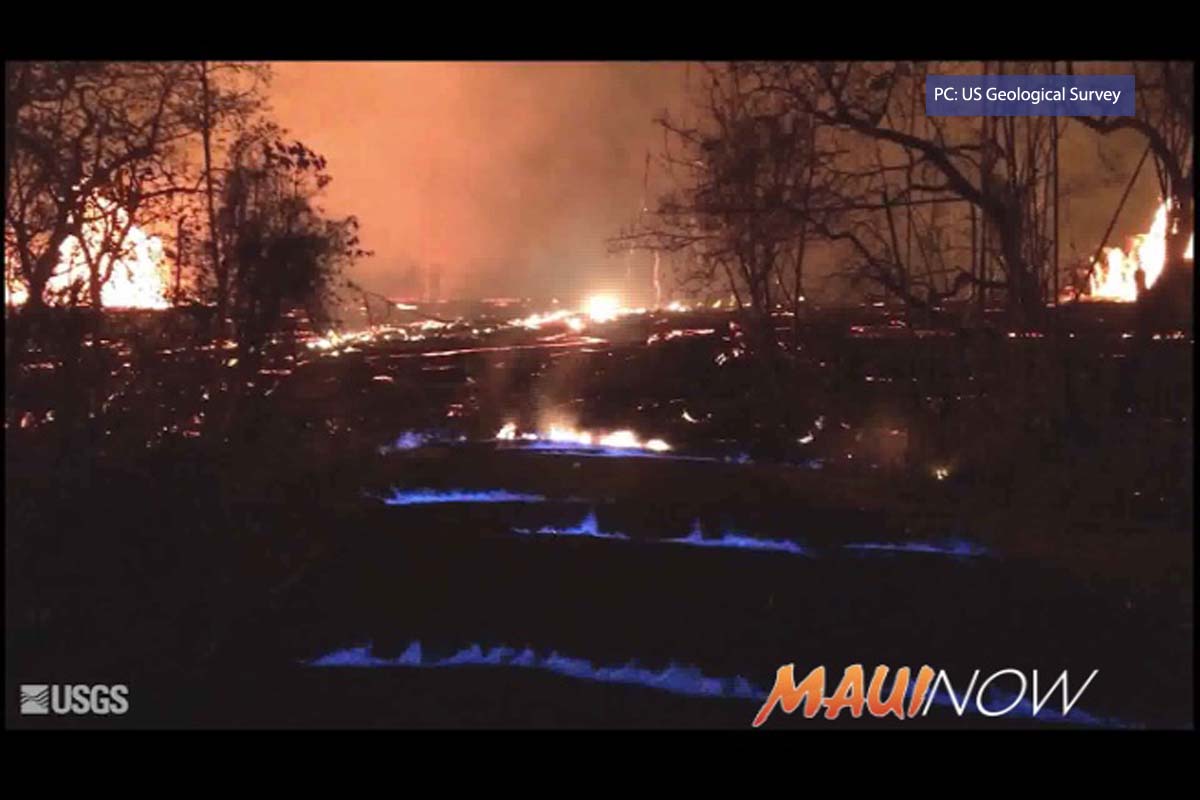
A blue burning flame of methane gas was observed in the cracks on Kahukai Street during the overnight hours. When lava buries plants and shrubs, methane gas is produced as a byproduct of burning vegetation. Methane gas can seep into subsurface voids and explode when heated, or as shown in this video, emerge from cracks in the ground several feet away from the lava. When ignited, the methane produces a blue flame. PC: US Geological survey
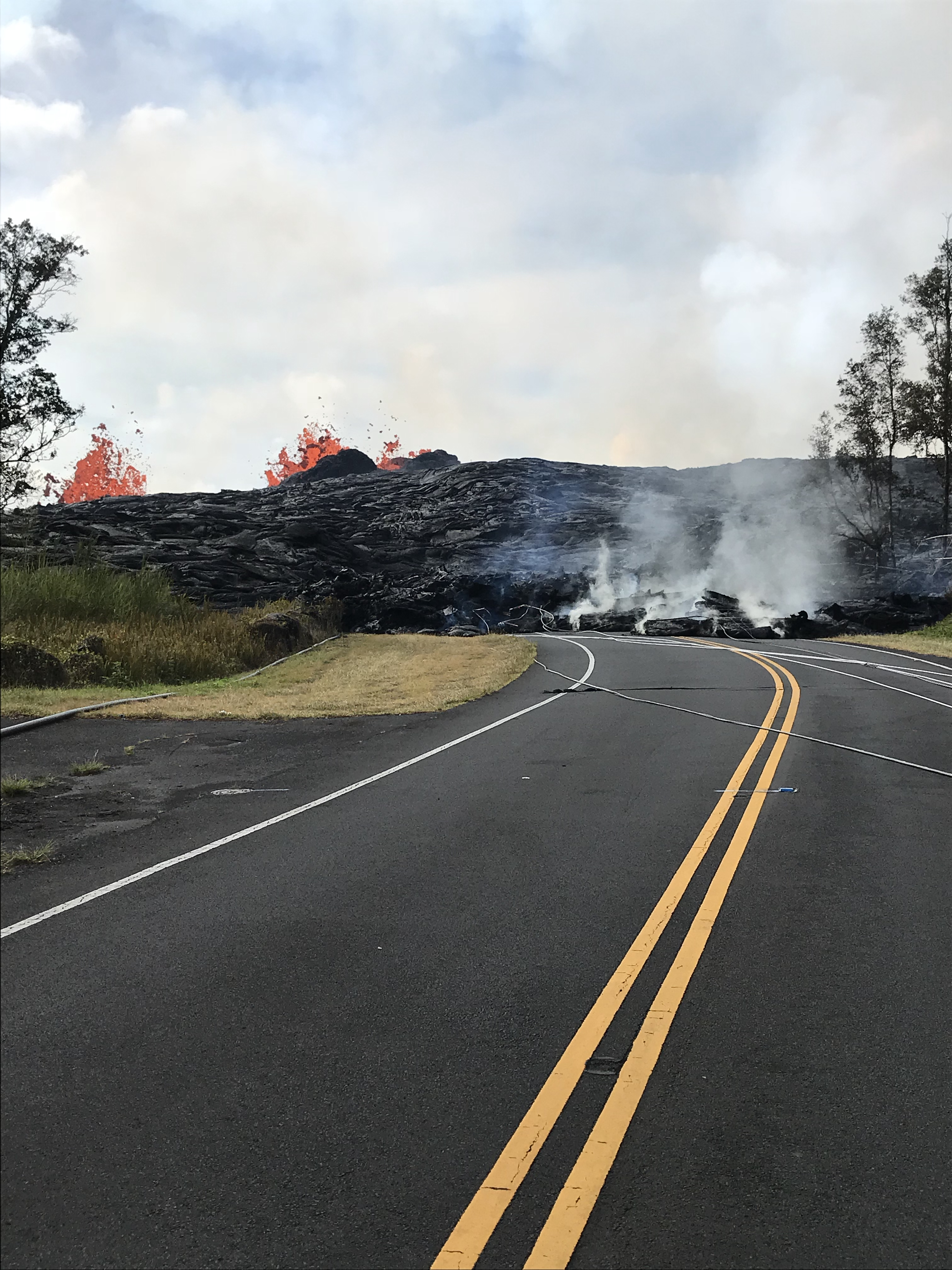
Fissure 6 builds a lava berm across Pohoiki Road. PC: US Geological Survey 5.23.18
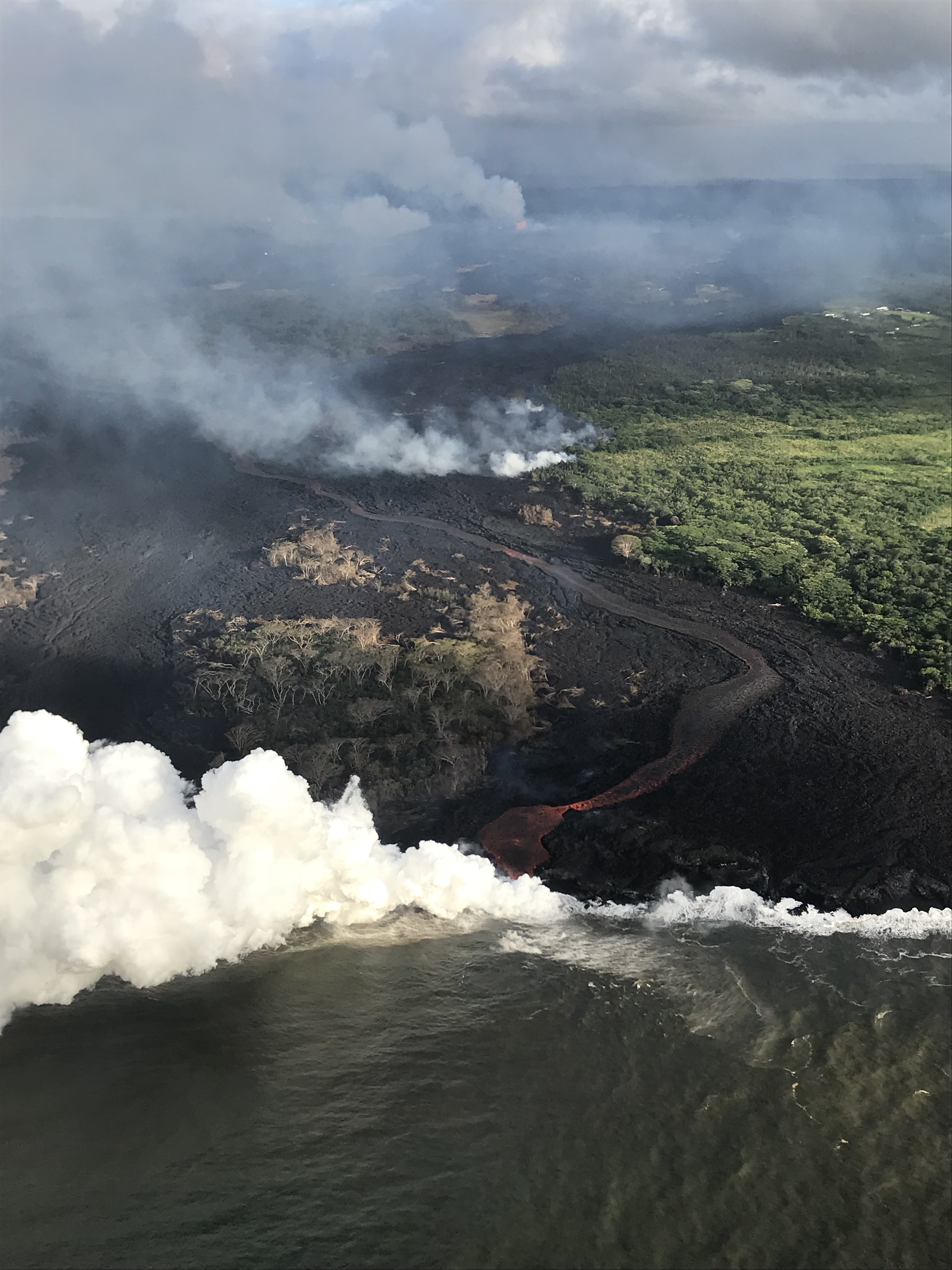
View from a helicopter of the channelized lava flow and active ocean entry. The fissure complex is visible in the upper center of the image. PC: US Geological Survey. 5.23.18
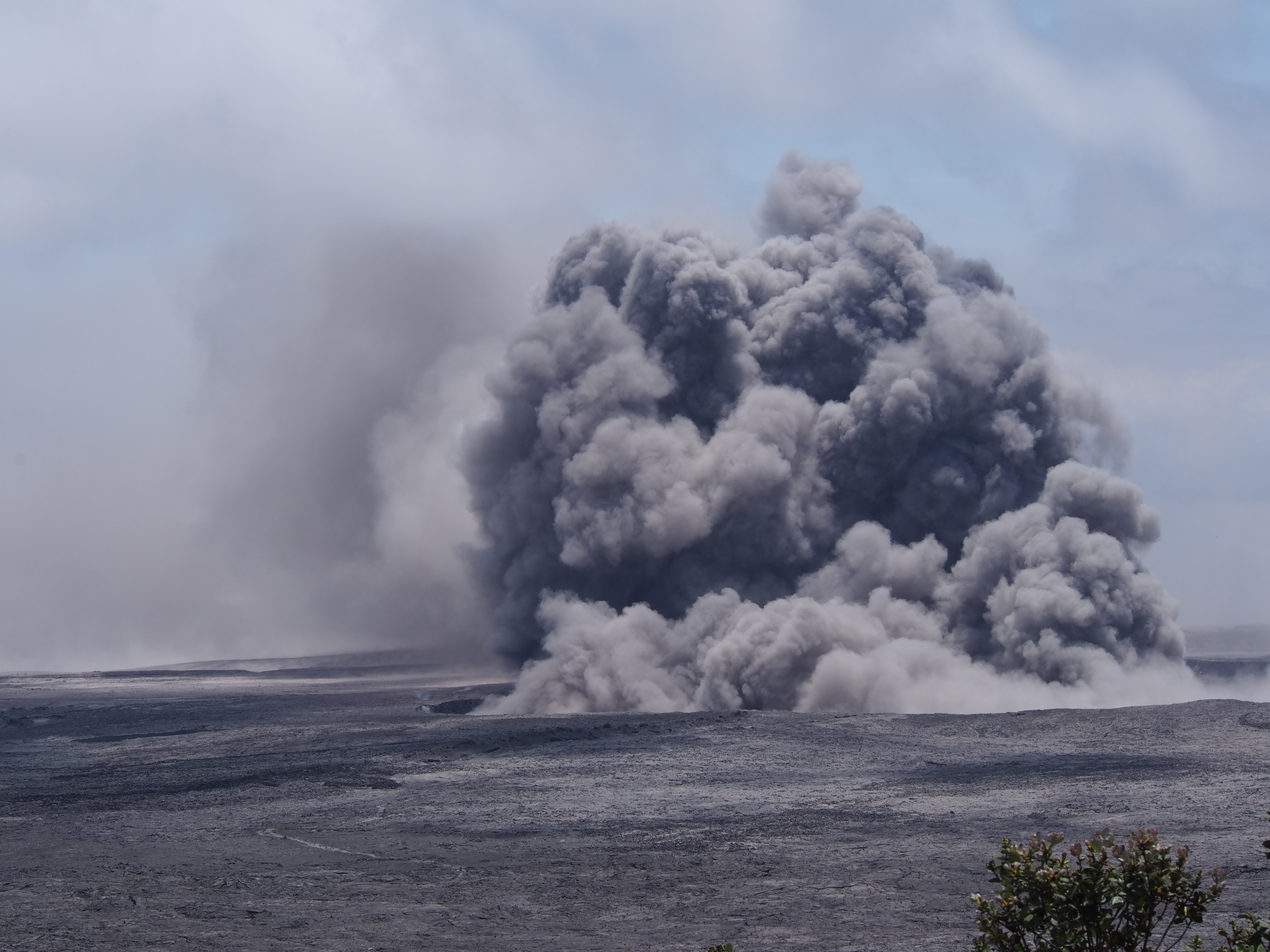
A telephoto lens zoomed in on this ash plume at 12:55 p.m. HST on Wednesday, May 23, 2018. USGS photo by D. Swanson.
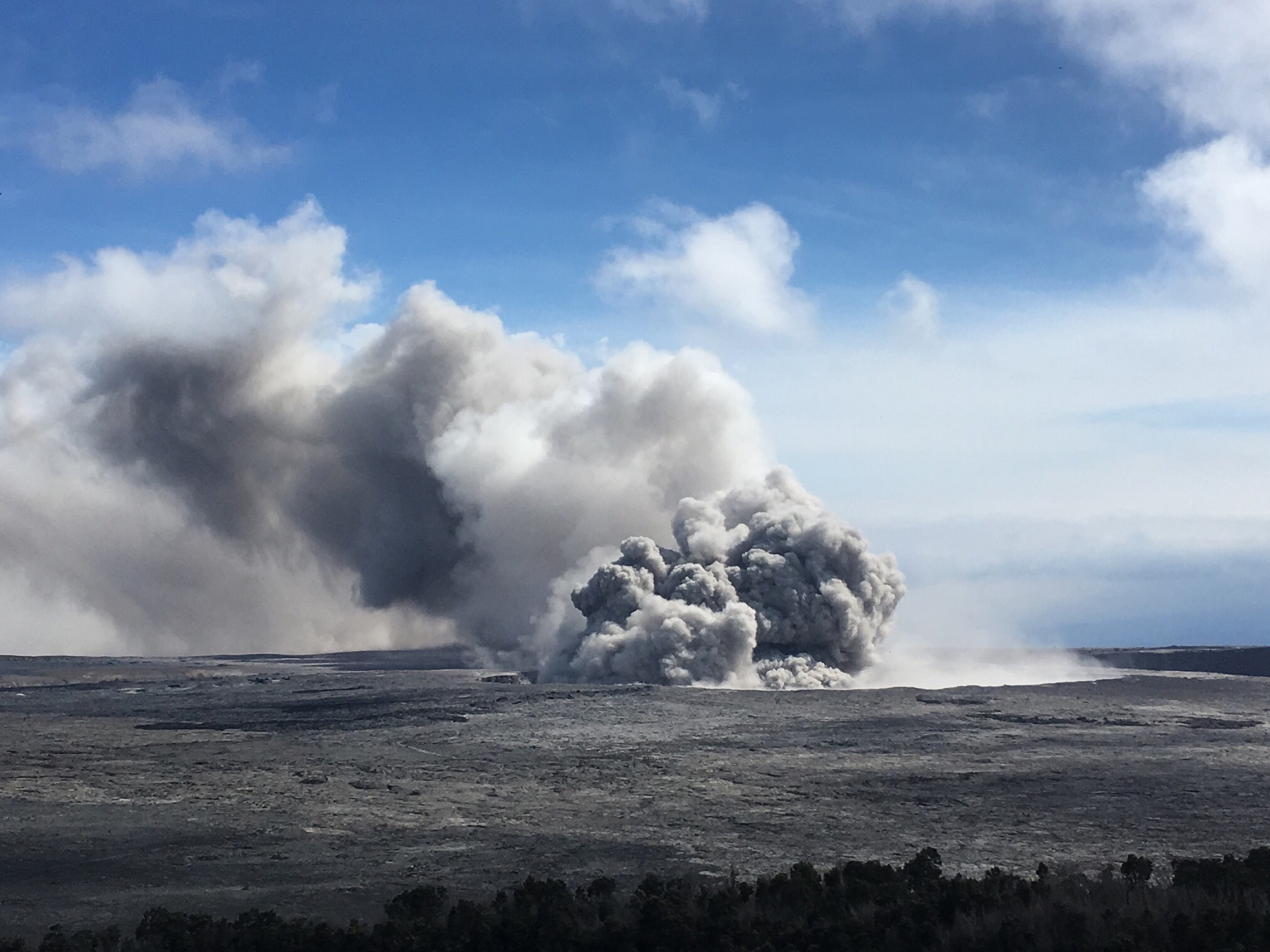
A pulse of ash rises from Halema‘uma‘u as part of semi-continuous emissions at Kīlauea’s summit today. Ash can be seen falling from the plume as it is blown downwind in this image, taken around 3:28 p.m. HST on Wednesday, May 23, 2018. USGS photo by I. Johanson.












